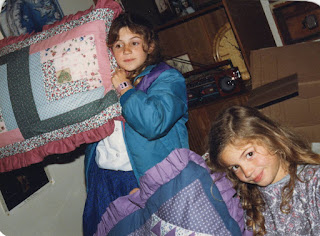I did find Samuel COOPER and a Mary BUNWORTH listed together on a family tree on Ancestry.com. I contacted Ashley Brown, who I discover is my third cousin. We were both excited to find each other. We scheduled a Skype conversation which lasted ninety minutes. He answered many questions for me about his grandmother, Mary Elizabeth or 'Lily' COOPER, the only daughter of Sam and Mary Bunworth Cooper. Mary and young Lily returned to Ireland after the death of Samuel. Lily was born in Chicago, Illinois.
Widow Mary would travel to various post offices to teach Morse Code as her livelihood. This is possibly how Mary met
Thomas Henry BROWN, a fellow postmaster. They were married on 29 April 1903, in Rossmine church of County Waterford.
The following year, on 23 June 1913, Lily married her stepfather's younger brother, George Jason BROWN in Kilmacthomas, Co. Waterford, Ireland. Cousin Ashley sent me a picture of their wedding day. I love her bouquet.
 |
| George Brown and Lily Cooper on their wedding day. Photo in possession of Ashley Brown. |
I find it interesting to see Mary or Lily's father, Samuel Cooper (coal merchant) assuming to be alive. Most deceased fathers are listed as deceased.
George and Lily had four children named Joseph, Mary, Thomas and Sarah. Three of the children are pictured below.
 |
| Lily and George with their first three children, Joseph, Mary and Tom. Photo in possession of Ashley Brown. |
Their eldest son, Joseph, died at the age of six of diptheria and heart failure according to his death registration. He died on 2 July 1921. Joseph Samuel Brown (named after both grandfathers) was born on 15 Sept 1914 in Kilmacthomas, Co. Waterford.


































